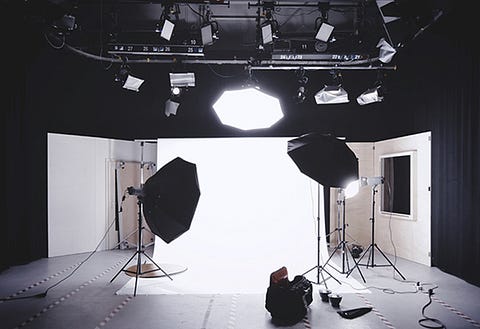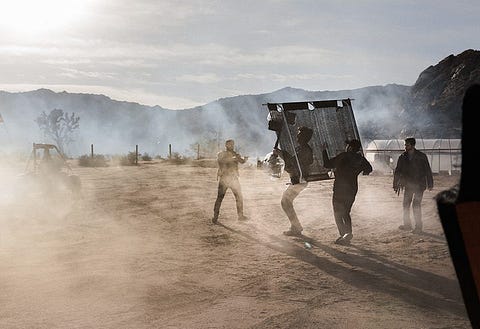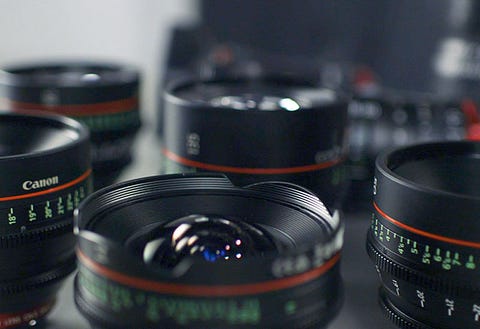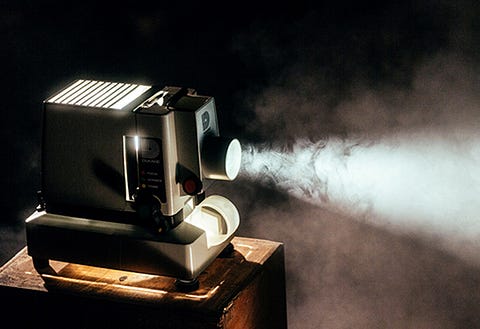
You’ve watched a plenty of films in your lifetime, dreaming of making one yourself someday. You are filled with great ideas and concepts, and you’ve got all that it takes to become a filmmaker. But as a filmmaker, it is best to keep an open mind and learn from the experts and professionals before establishing your own filmmaking style. Take your love for filmmaking to the next level and find your inspiration from WWI Extension’s list of top 10 people to follow in filmmaking to #MakeTheCut:
1. Alfred Hitchcock — FilmmakerOne of the most influential and extensively studied filmmakers in the history of cinema, Alfred Hitchcock has to be on top of our list. With over 50 feature films under his belt, 46 Oscar nominations and 6 wins, he is best known for his innovative film techniques. Students of filmmaking can observe his camera movement and framing techniques he used to maximize emotions. One of his techniques of using a high angle shot was spotted in the movie ‘Psycho’. He built up curiosity in the viewers by keeping the identity of the killer hidden in the detective’s murder sequence, where he suddenly switches to a high angle shot just when the killer is about to strike.
2. Anurag Kashyap — Filmmaker
Writer, director, producer, actor — Anurag Kashyap started his journey from writing for television and made his way to rise as one of the most well-known filmmakers of Bollywood His sharp eye for actors that best fit the roles, his brave storytelling, and unique filmmaking style is what aspiring filmmakers should watch out for. Whether it’s the story of a broken relationship between a father and son in ‘Udaan’, power-struggles between Indian Mafia families in ‘Gangs of Wasseypur’, or the journey of a heart-broken woman travelling to Europe for her solo honeymoon in ‘Queen’ — he focuses mainly on realistic cinema with unconventional scripts and a fearless approach.
3. John Alcott — Cinematographer
Besides being known for his four collaborations with some of the greatest filmmakers of his time, John Alcott was also known for going the extra mile to make his films visually appealing. Studying his work from Barry Lyndon is necessary for every aspiring cinematographer. The cinematography of the film seamlessly blends in with its storyline, for which he won an Oscar too. One of the sequences from the film to learn from is the first large battle scene that opens with a tracking shot, filmed by one of the three cameras that were running simultaneously along an 800-foot track. All the close-up and wide shots in the sequence were filmed using a 250mm lens, and the movement was minimized using a system of stabilization.
4. Pankaj Kumar — Cinematographer
The cinematographer behind the award-winning Tumbbad, Pankaj Kumar started his career in 2013 and rolled out several feature films ever since. His camerawork depicts a visual narrative that he seamlessly weaves into the scripts he works with to lend each of his films a unique look and style. Keep an eye for the visually striking sequences in some of his films like Haider and Judgmental Hai Kya.
5. Charlie Kaufman — Screenwriter
One of the most celebrated screenwriters of his era, Charlie Kaufman is a screenwriter, director, producer, and novelist whose work will never be forgotten. Through his screenplays, he depicts the complex emotions and inner desires that an ordinary person experiences, which we witnessed in ‘Being John Malkovich’ and ‘The Eternal Sunshine of the Spotless Mind’. His offbeat, fearless approach to storytelling makes him an inspiration for all screenwriters.
6. Woody Allen — Screenwriter
With a career spanning over six decades and having written over 60 films during his illustrious journey, Woody Allen definitely makes it to our list of top 10 people to follow in filmmaking. Each film written by him exhibits a signature ‘Woody Allen style’. From slapstick comedies to surreal films — he has a way of narrating each of his stories in the most enticing way, whether it is the dialogues or the story itself.
7. Raj Kapoor — Actor / Director
Regarded as ‘The Greatest Showman’ of Indian Cinema, Raj Kapoor was one actor, producer, and director who paved his path in Bollywood through his passion and vision for cinema. His versatile and progressive filmmaking style was a display of his cinematic genius. From some of his films being nominated at the Cannes Film Festival, to receiving two highly ranked accolades from the Government of India for his contribution to the Indian Film Industry — he truly set an example for generations to follow.
8. A. Sreekar Prasad — Editor
Sreekar Prasad, an editing maestro from the Indian film industry, is best known for his multi-lingual editing abilities. In his career spanning over two decades, he has won 8 national film awards and set a Limca Book Record for editing films in 17 different languages. He does not resonate with a particular style of editing, but rather believes in making each scene as seamless as possible. Students of filmmaking and editing should study the movie ‘Talvar’ which won the Filmfare Award for Best Editing. He flawlessly weaved together three different narratives of investigation authorities into one story, while ensuring that none of them overlap or sound repetitive.
9. Imtiaz Ali — Director / Writer
One of the leading and most dynamic Filmmakers of Bollywood, Imtiaz Ali is best known for his movies Jab We Met, Love Aaj Kal and Rockstar. Through his award-winning narratives, he displays the complexities of the human mind in a way that resonates with the audiences. Whether it is his contemporary filmmaking style, experiential storytelling, or creating some of the most memorable on-screen protagonists — there’s a lot that aspiring filmmakers can draw inspiration from.
10. Lee Smith — Editor
Oscar-winning editor, Lee Smith’s work is a must-follow for any editor who is trying to #MakeTheCut. He started his career in sound and made his way to work on some of the finest movies of the era like Christopher Nolan’s Batman trilogy, Inception, Interstellar and many more. Beyond doubt, his work in ‘Dunkirk’ was noteworthy where he weaved timelines to intersect at various parts throughout the movie, which involved long hours of editing and experimenting.
Reference Links:
www.nfi.edu/foley-artist
www.sound-ideas.com/Page/what-is-foley
www.studiobinder.com/blog/what-is-a-foley-artist
www.nfi.edu/foley-artist
www.sound-ideas.com/Page/what-is-foley
www.studiobinder.com/blog/what-is-a-foley-artist


